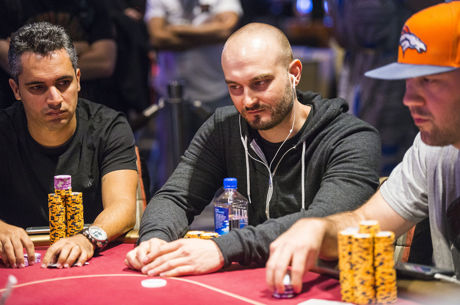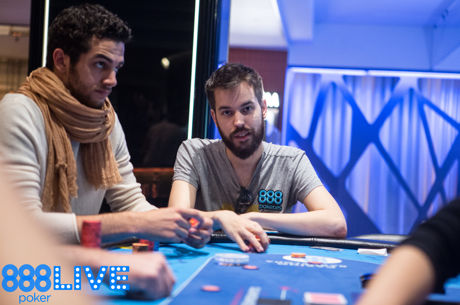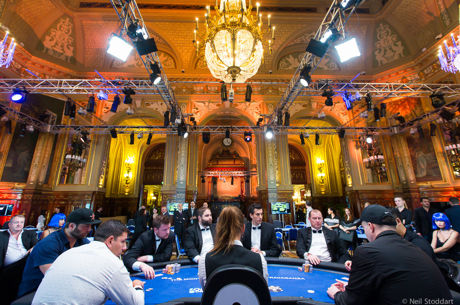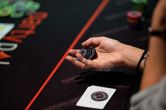10 Tips for Sit & Go Success: How To Play Heads-Up
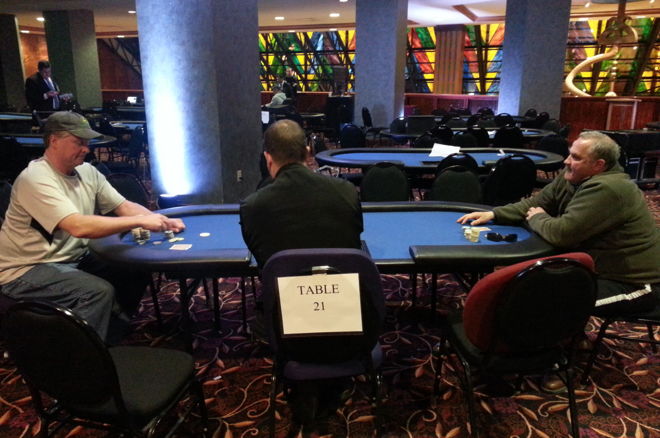
Last week, we discussed three-handed strategy for a single-table sit & go. This week, we will tackle heads-up play.
It's important to be able to play the endgame effectively in SNGs. When playing poker online in a standard single-table sit & go, for example, the payouts typically have 50 percent of the prize pool go to the winner and 30 percent to the runner-up.
At this point of a SNG, the effective stack is usually under 10 big blinds or it will be in short order. The shallow stacks tend to make the game simple and relatively easy to play. Generally, you want to be going all in or folding. Which hands you do this with depends on the tendencies of your opponent.
Facing an Unknown or Balanced Player
When you are facing an unknown or balanced opponent, it is best to utilize an unexploitable strategy. One strategy that has stood the test of time is called the "Sit And Go Endgame" system, or SAGE for short. It was developed and introduced by Lee Jones back in 2006 and is still relevant to SNG strategy today.
Essentially, SAGE is a shorthand memory trick that helps you determine if a hand is an unexploitable shove or call. Here is how you use SAGE.
First, you must calculate the Power Index (PI) of your hand. Number cards are valued at the displayed amount 2 through 10. Then jacks are worth 11, queens 12, kings 13 and aces 15.
To calculate your hand's PI, double the value of your highest card, then add the value of your lowest card. If you hand is suited, add another 2 points. If you have a pair, double the value of one of your cards, add the other one, then add another 22 points.
For example, with J♣7♥, you double the value of the jack (11 x 2) and add the 7, totaling 29. With 8♦7♦, you double the eight (8 x 2), add the 7, then add 2 more for suitedness to total 25. With 6♠6♣ you double one of the sixes (6 x 2), add 6 more, then add 22 for being paired to total 40.
Once you've calculated the PI of your hand, use the chart below to look up the number of big blinds in the effective stack to determine if your hand has a PI high enough to play.
For example, when the effective stack is 7 big blinds, you must have a PI of 26 or higher to shove and a PI of 30 or higher to call. This means it would be recommended to open-fold 8♦7♦ (PI = 25), to shove but not call with J♣7♥ (PI = 29) and shove or call with 6♠6♣ (PI = 40) based on our calculations above.
This shorthand is game theoretically optimal for effective stack sizes 7 BBs or below. It starts to break down for bigger stacks, so I am including a second short chart with the percentage of hands you can shove or fold 8-10 BBs unexploitably as recommended by Max Silver's SnapShove app.
SAGE Chart
| Effective Stack Size (BBs) | Shove if PI is at least | Call if PI is at least |
|---|---|---|
| 1 | 17 | Call Any Two Cards |
| 2 | 21 | 17 |
| 3 | 22 | 24 |
| 4 | 23 | 26 |
| 5 | 24 | 28 |
| 6 | 25 | 29 |
| 7 | 26 | 30 |
SnapShove
| Effective Stack Size (BBs) | Shove Top X% of hands | Call Top X% of hands |
|---|---|---|
| 8 | 61.7% | 45.4% |
| 9 | 59.9% | 40.6% |
| 10 | 58.4% | 37.6% |
These are great defaults to use when you don't know what mistakes your opponent is likely to make. But when you know he is too tight or too loose, you can deviate from this baseline to exploit him even further.
Facing an Overly Tight or Overly Loose Player
SAGE would have you call a 7 BB shove with a hand like Q♣6♦ (PI = 30). This is great to know against a good player who is shoving hands as bad as Q♥2♠ (PI = 26), but not against a player who shoves too tight.
If you know this to be true about your opponent, you should call him tighter than SAGE suggests. If you can determine the bottom of his shoving range, just call him slightly tighter than that.
By the same token, the range of hands SAGE suggests to shove is profitable against a player who calls correctly. But if your opponent calls too tight, then you can shove even wider than the SAGE ranges.
Feel free to throw in a few more hands, especially those that contain big cards, but don't go overboard. There are players and situations where you can get away with shoving any two cards — but this approach can quickly become a slippery slope to Spew Valley, so be careful.
When facing a player who shoves or calls too loose, you can just stick to the SAGE ranges. The fact that he is getting it in with more garbage than you just improves the EV of every hand in your ranges.
Heads-up play is where the real money is in a SNG. But because of the short stack sizes, it can be one of the easiest parts of the tournament to play. If you utilize these tips, you should win at least your fair share of SNGs in the long run.
Next week, we'll wrap this series up with a discussion of sit & go bankroll management.
Also in this series...
- SNG Pros & Cons
- Assessing Structures and Speeds
- Introducing the Independent Chip Model
- Practical Applications of ICM
- Early Level Play
- Middle Stage Strategy
- On the Money Bubble
- Three-Handed Play
- Managing Your SNG Bankroll
Ready to start giving sit & gos a try? Put these tips into practice at partypoker.
In this Series
- 1 10 Tips for Sit & Go Success: SNG Pros and Cons
- 2 10 Tips for Sit & Go Success: Assessing Structures and Speeds
- 3 10 Tips for Sit & Go Success: Introducing the Independent Chip Model
- 4 10 Tips for Sit & Go Success: Practical Applications of ICM
- 5 10 Tips for Sit & Go Success: Early Level Play
- 6 10 Tips for Sit & Go Success: Middle Stage Strategy
- 7 10 Tips for Sit & Go Success: On the Money Bubble
- 8 10 Tips for Sit & Go Success: Three-Handed Play
- 9 10 Tips for Sit & Go Success: How To Play Heads-Up
- 10 10 Tips for Sit & Go Success: Managing Your SNG Bankroll

